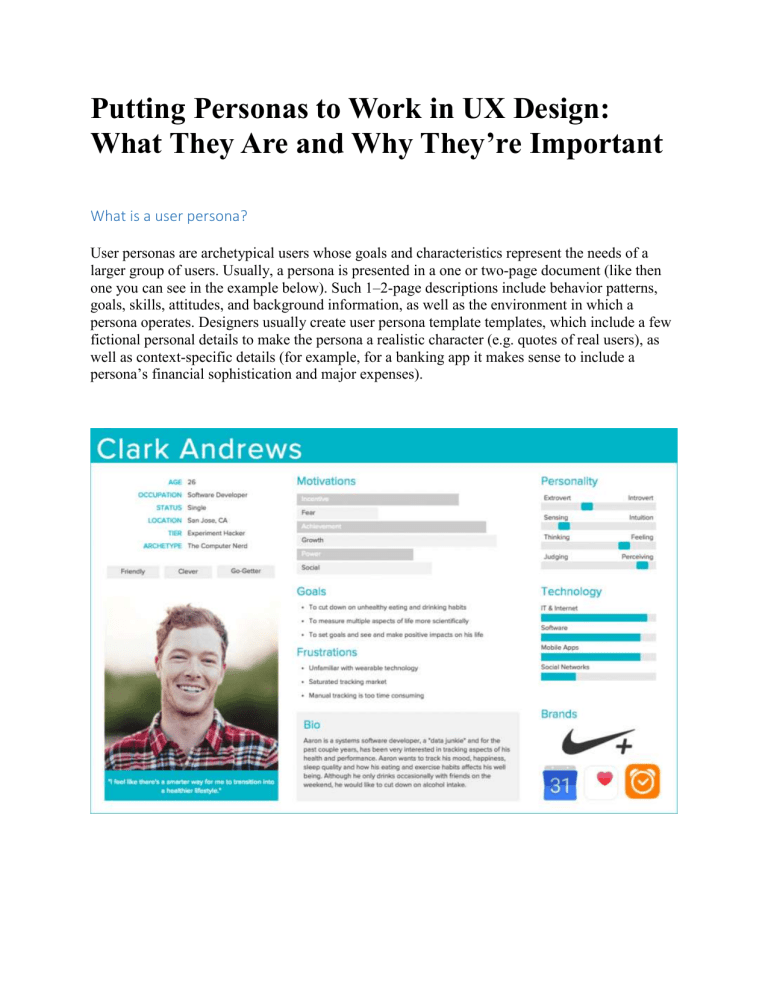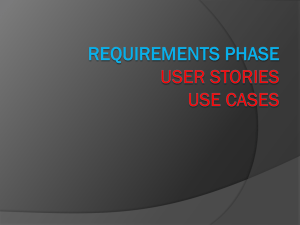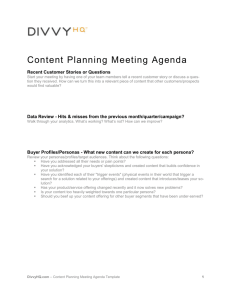
Putting Personas to Work in UX Design: What They Are and Why They’re Important What is a user persona? User personas are archetypical users whose goals and characteristics represent the needs of a larger group of users. Usually, a persona is presented in a one or two-page document (like then one you can see in the example below). Such 1–2-page descriptions include behavior patterns, goals, skills, attitudes, and background information, as well as the environment in which a persona operates. Designers usually create user persona template templates, which include a few fictional personal details to make the persona a realistic character (e.g. quotes of real users), as well as context-specific details (for example, for a banking app it makes sense to include a persona’s financial sophistication and major expenses). Why are user personas important? A deep understanding of a target audience is fundamental to creating exceptional products. User personas help a product team find the answer to one of their most important questions, “Who are we designing for?” By understanding the expectations, concerns, and motivations of target users, it’s possible to design a product that will satisfy users’ needs and therefore be successful. Here are some of the benefits of using personas in the UX design process: Build empathy Empathy is a core value if designers want to make something that is good for the people who are going to use it. Personas help designers to create understanding and empathy with the end-users. Thanks to personas designers can: Gain a perspective similar to the user. Creating user personas can help designers step out of themselves and recognize that different people have different needs and expectations. By thinking about the needs of a fictional persona, designers may be better able to infer what a real person might need. Identify with the user they are designing for. The more designers engage with the user personas and see them as real people, the more likely they will be to consider them during the design process and want to create the best product for them. Provide direction for making design decisions User personas help designers shape product strategy and accompany during the usability testing sessions. A deep understanding of user behavior and needs makes it possible to define who a product is being created for and what is necessary or unnecessary for them from a user-centered point of view. This allows product teams to prioritize feature requests (for example, features can be prioritized based on how well they address the needs of a primary persona). They can also help settle arguments around design decisions – instead of saying, “I think the ‘Send’ button is too small,” a designer might say, “Since our primary persona, Carolyn, always use mobile on a go, we need to design bigger tap targets in our app to minimize the interaction cost.” User personas also help prevent common design pitfalls: Self-referential design. This happens when designers design as if they are making the product only for themselves, when in fact the target audience is quite unlike them. Design for elastic users. An elastic user is a generic user which means different things to different people. Designing for an “elastic user” happens when product decisions are made by different stakeholders who may define the ‘user’ according to their convenience. It’s worth mentioning that although user personas can help designers prioritize the features, they can’t be used as the only tool for prioritization; the needs and goals of the business itself should be also considered. UX designers should find a proper balance between both the needs of the business and users to create a harmonious solution. Communicate research findings Most designers work in multidisciplinary teams that have team members with varying expertise, experience, and points of view. All team members should be on the same page in terms of design decisions. Personas encapsulate the most critical information about users in a way that all team members and stakeholders can understand and relate to. Characteristics of a good persona While it’s easy to select a set of user characteristics and call it a persona, it’s hard to create user personas that are truly effective design and communication tools. Here are a few characteristics of a good persona: 1. Personas aren’t fictional guesses at what a target user thinks. Every aspect of a persona’s description should be tied back to real data (observed and researched). 2. Personas reflect real user patterns, not different user roles. Personas aren’t a reflection of roles within a system. 3. A persona focuses on the current state (how users interact with a product), not the future (how users will interact with a product). 4. A persona is context-specific (it’s focused on the behaviors and goals related to the specific domain of a product). 5 Steps to creating user personas Personas can be created in a myriad of ways — it all depends on budget, type of a project and the type of data designers are able to collect. While detailed step-by-step instructions on how to create a persona are beyond the scope of this article, it’s still possible to provide a general flow on how to do it: 1. Collect the information about your users The first step is to conduct user research to understand the target audience’s mindsets, motivations, and behaviors. The most accurate personas are based on actual field research — they are distilled from in-depth user interviews and observation data of real users. It’s essential to collect as much information and knowledge about users as possible by interviewing and/or observing a sufficient number of people who represent a target audience. The more a researcher observes and captures during these interviews, the more realistic the persona will be. In a case when it’s impossible to interview/observe real individuals — time and money don’t allow for the user research needed to define accurate personas — it’s still possible to create a persona based on what the team knows about users. If your product is available on the market and has real users, you can rely on customer support logs and web analytics to create a persona. A persona created using this approach is known as a provisional persona, and is a great placeholder until real personas are created. During this step, it is very important to avoid generating user personas of stereotypical users (users that don’t have any relation to the actual user’s reality). Completely fictional stories of imaginary people based on little or no research bring no value for the design process and in fact, can bring harm. Furthermore, poorly constructed personas can easily undermine the credibility of this technique. 2. Identify behavioral patterns from research data The next step is analyzing research findings. The goal during this step is to find patterns in user research data that make it possible to group similar people together into types of users. There’s a simple strategy suggested by Kim Goodwin: Once the research is finished, list all of the behavioral variables (i.e. ways in which users’ behavior differed). Map each interviewee (or real-life user attributes) against the appropriate set of variables. Identify trends (find a set of people clustering across six or eight variables). These grouping trends will then form the basis of each persona. 3. Create personas and prioritize them Next, it’s important to assemble a persona’s descriptions around behavioral patterns. The researcher’s task here is to describe each persona in such a way that expresses enough understanding and empathy to understand the users. During this step, it’s best to avoid the temptation to add a lot of personal details: one or two bits of personality can bring a persona to life, but too many details will be distracting and will make the persona less credible as an analytical tool. Don Norman put it this way: “[personas] only need to be realistic, not real, not necessarily even accurate (as long as they accurately characterize the user base).” Quite often, researchers create more than one persona for each product. Most interactive products have multiple audience user segments which is why it seems logical to construct multiple personas. However, with too many personas, the process can get out of hand. The personas can simply blur together. That’s why during this step it’s also important to minimize the number of user personas, so it’s possible to focus on design—and this may guarantee better success. While there’s no magic number, as a rule of thumb, three or four personas are enough for most projects. Tip: If you have more than one persona it’s good to define the primary persona (the most relevant) and follow the rule “design for the primary – accommodate the secondary.” Design decisions should be made with the primary persona in mind and then tested (through a thought experiment) against the secondary personas. 4. Find scenario(s) of interaction and create user personas UX documentation Personas have no value in and of themselves. They become valuable only when they tied up to a scenario. A scenario is an imagined situation that describes how a persona would interact with a product in a particular context to achieve its end goal(s). Scenarios help designers understand the main user flows – by pairing the user personas with the scenarios, designers gather requirements, and from those requirements, they create design solutions. Scenarios should be written from the persona’s perspective, usually at a high level, and articulate use cases that will likely happen. Generally, when creating a user persona template you should include the following information: Persona name Photo Demographics (gender, age, location, marital status, family) Goals and needs Frustrations (or “pain points”) Behaviors Bits of personality (e.g. a quote or slogan that captures the personality) A great tool that will help you during this step is the Persona Creation and Usage Toolkit developed by George Olsen. George has developed a comprehensive list of all the factors that can be considered for the persona description. Tip: Avoid using real names or details of research participants or people you know. This can bias the objectivity of your user personas (you’ll focus on design for this person, rather than a group of people with similar characteristics). 5. Share your findings and obtain acceptance from the team Socializing personas among stakeholders are critical in moving the design team toward action. All team members and stakeholders should have a positive association with personas and see the value in them. As people become familiar with the personas, they start talking about them as if they were actual people. A well-constructed persona almost becomes another member of the team.


